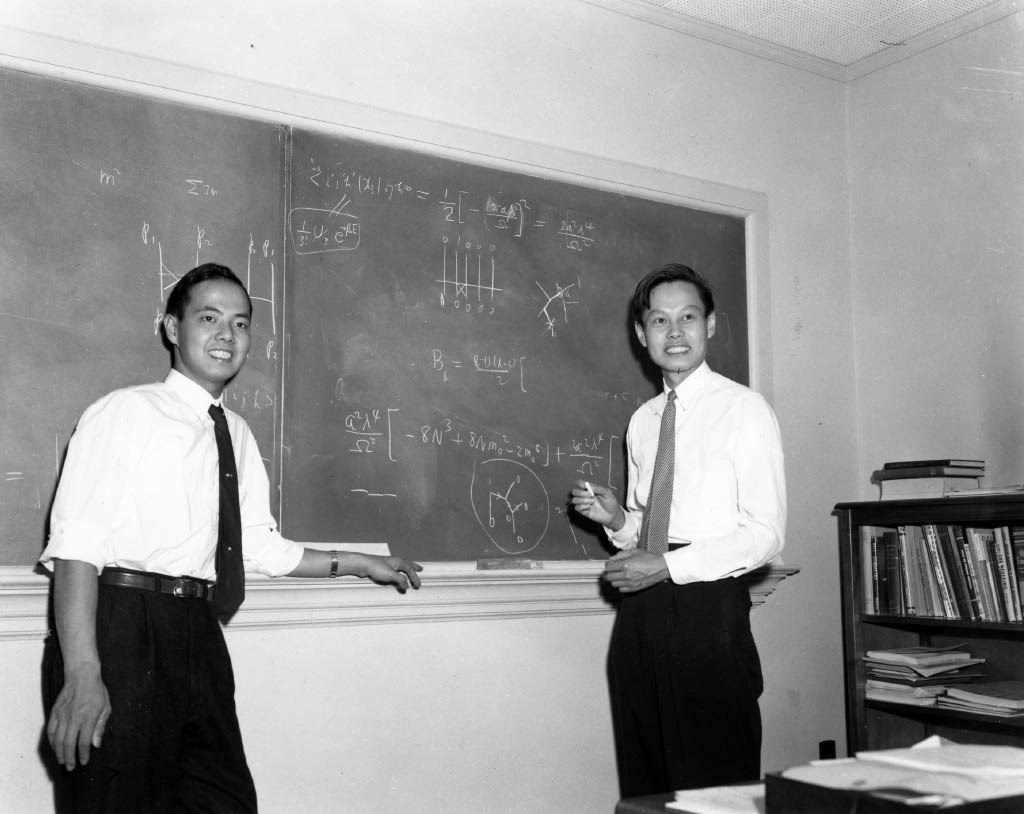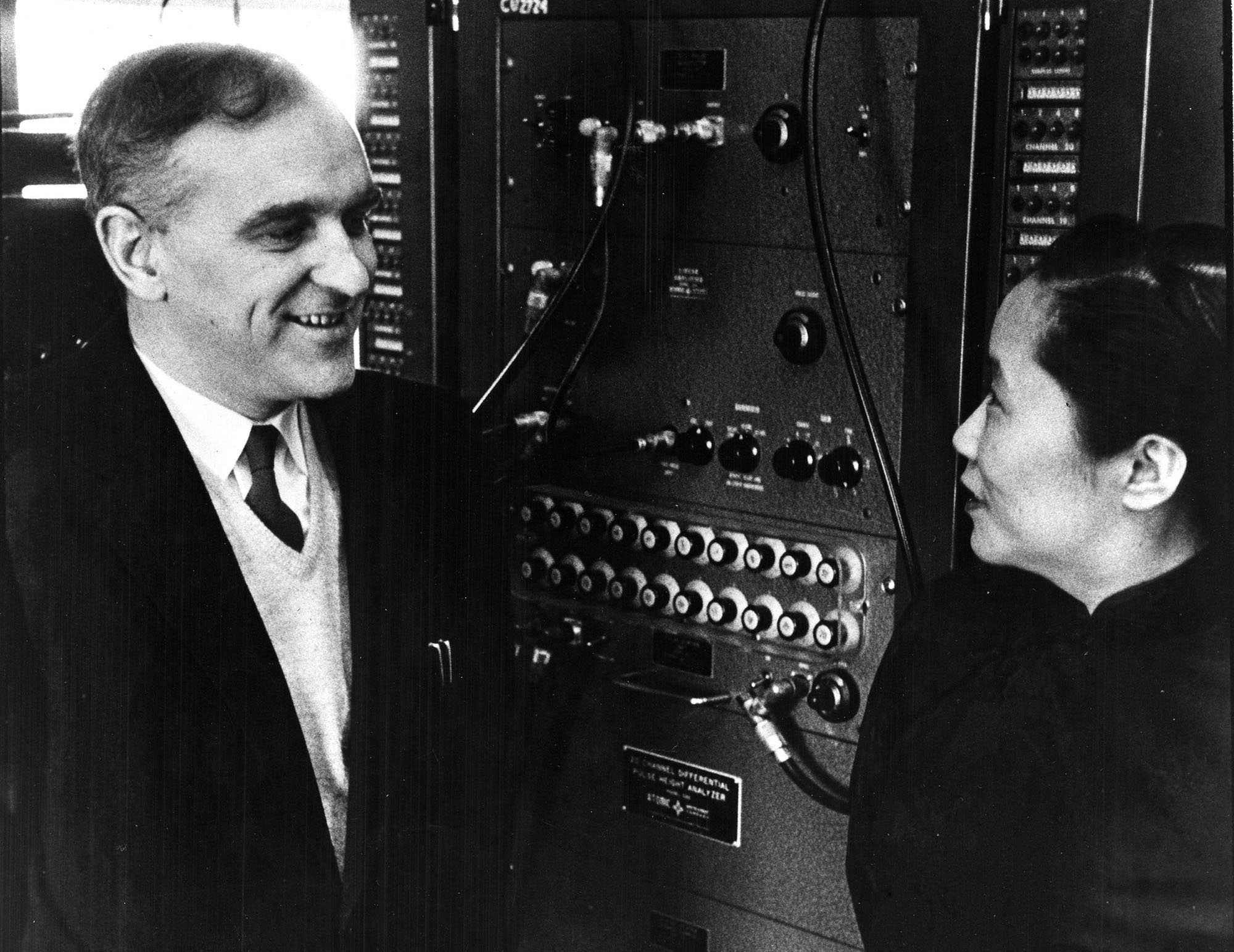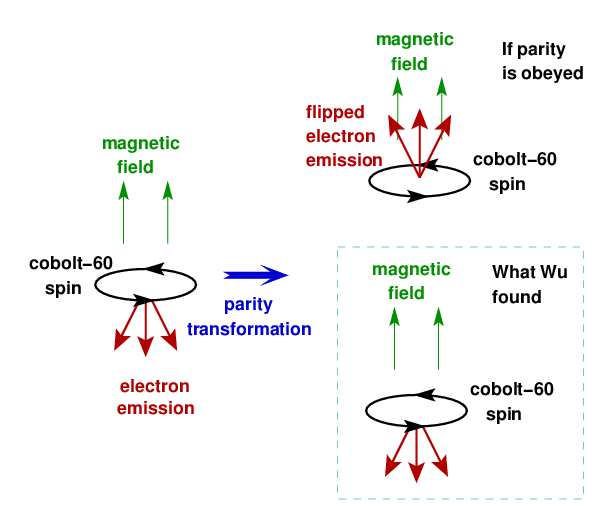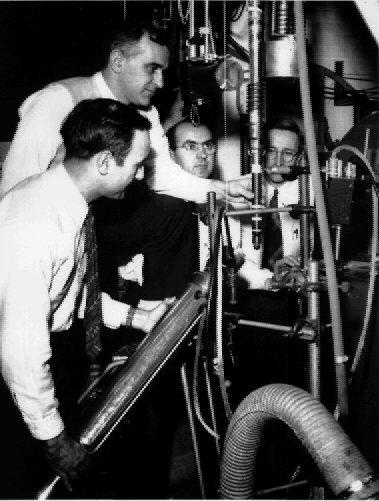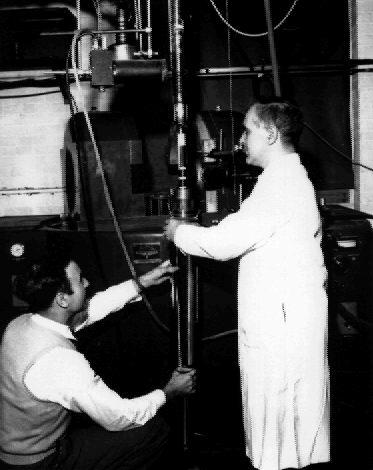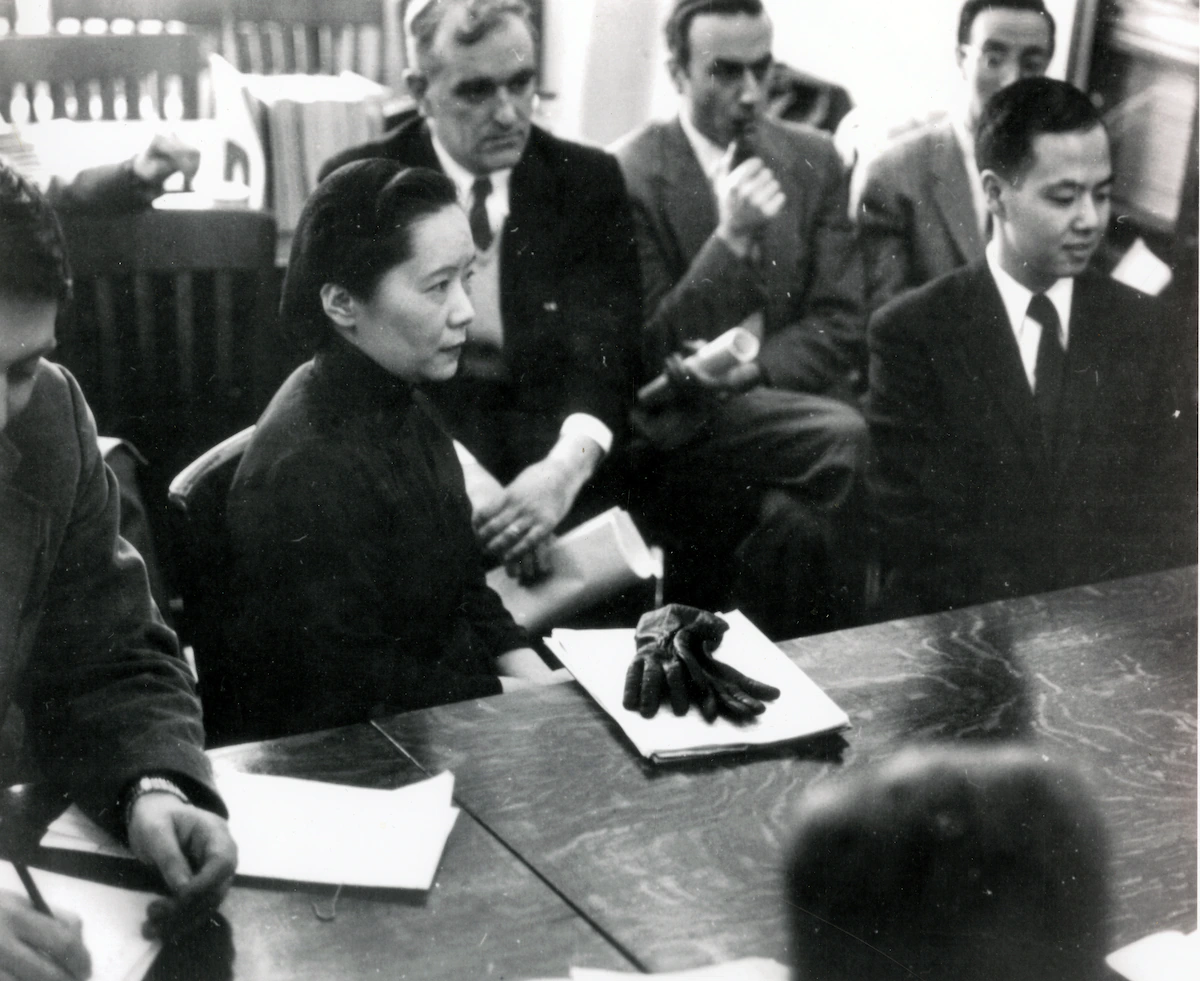In 1956, theoretical physicists Tsung Dao Lee and Chen Ning Yang approached Chien-Shung Wu. Knowing about her expertise in beta decay, they requested that she conduct an experiment to prove their theory that "the law of conservation of parity did not hold true during beta decay." The law of parity, a fundamental principle in the field of physics at the time, states that objects and their mirror images behave the same, but with the left hand and right hand reversed. Wu's work, also known as the Wu experiment, was a groundbreaking discovery and showed that the weak force violated this symmetry.
"Wu’s work verified a hypothesis put forth in 1956 by her Columbia colleague Tsung-Dao Lee and Chen-Ning Yang that, unlike all other known physical forces, the "weak" interactions among decaying particles are not always symmetrical in nature. Before Wu’s measurements, the laws of physics had always shown complete symmetry between left and right—the world reflected in a mirror appeared no less possible than the world in front of it." (Columbia 250)
